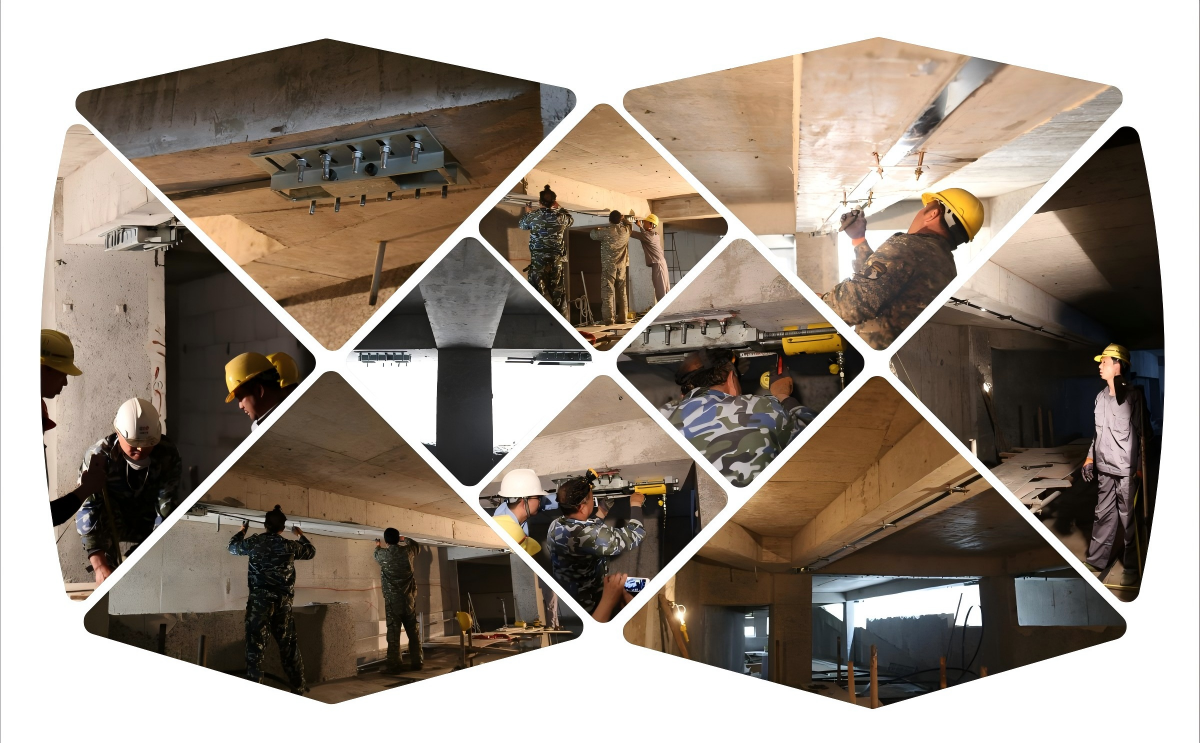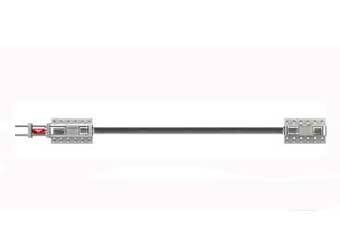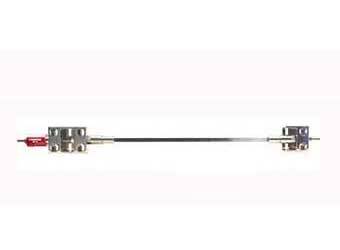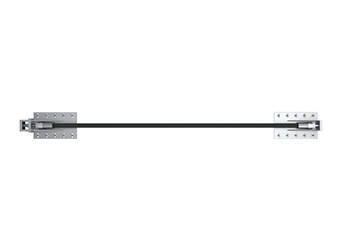Solutions
Horse Construction offers full range of structural strengthening materials with technical supports, documentation supports, products supports, project supports.
Prestressed Carbon Plates System

Prestressed carbon plates for basement beam reinforcement.
The core reason is that prestressed carbon plates can actively provide reverse loads to offset part of the internal force of the beams. They are more suitable for the high loads, large deflections and long-term stress requirements commonly found in basement beams, and solve the limitation of the "passive stress" of carbon fiber cloth.
Why is prestressed carbon plate used instead of carbon fiber cloth for basement beam reinforcement?
1. Load-bearing Mechanism: From "Passive Reinforcement" to "Active Reinforcement," the Difference in Effectiveness
The core difference between the two materials lies in whether they can be actively prestressed, which directly affects the extent of the increase in load-bearing capacity after reinforcement.
Prestressed carbon plates: Prestressed carbon plates are preloaded using a tensioning device and then anchored to the beam.
This "active reinforcement" method preemptively generates reverse pressure in the beam's tension zone, offsetting some of the tensile forces generated by external loads, effectively "reducing the load" on the beam.
The resulting increase in the beam's total load capacity significantly increases, making it particularly suitable for basement beams facing insufficient load-bearing capacity due to subsequent functional modifications (such as adding equipment or increasing the load capacity).
Carbon fiber cloth: Attached to the beam surface by adhesive bonding, this is a "passive reinforcement" method.
Carbon fiber cloth only gradually participates in the load-bearing process when the beam deforms and experiences tension under external loads; it cannot preemptively share internal forces.
For basement beams already experiencing minor cracking or significant deflection, the reinforcement effect of carbon fiber cloth is limited, making it difficult to effectively control crack propagation and deformation.
2. Long-Term Performance: Better adapted to the complex environment and stress characteristics of basements.
Basement beams often bear long-term static loads (such as the weight of the superstructure and equipment) and may be exposed to humidity, placing higher demands on the long-term stability and stiffness of the reinforcement material.
Stiffness and Deflection Control: The elastic modulus of prestressed carbon plates is higher than that of standard carbon fiber cloth (approximately 1.5-2 times that of carbon fiber cloth), significantly improving the overall stiffness of the beams after reinforcement.
This effectively reduces long-term deflection (sinking) of basement beams, preventing problems such as floor cracking and equipment misalignment caused by excessive deflection. It is particularly suitable for deformation-sensitive basements (such as those storing precision equipment or areas requiring waterproofing).
Durability and Environmental Adaptability: Prestressed carbon plates typically utilize a more closed anchoring system and protective coating, which isolates the basement from moisture and groundwater intrusion, reducing material degradation.
Carbon fiber cloth, on the other hand, relies primarily on an adhesive to bond to the beam. If high humidity in the basement causes adhesive aging, hollowing and shedding of the fabric may occur, compromising the reinforcement effectiveness.
You can find anything here you are in need of, have a trust trying on these products, you will find the big difference after that.

Prestressed carbon fiber reinforced polymer(CFRP) plate for slab, beam strengthening to increase stiffness, reduce distortion and deflection of members, reduce the cracks, avoid and stop cracking.

Prestressed carbon fiber reinforced polymer(CFRP) laminate for slab, beam strengthening to increase stiffness, reduce distortion and deflection of members, reduce the cracks, avoid and stop cracking.

Prestressed carbon fiber laminate circular anchorage system includes rigid anchorage, carbon fiber laminate and adhesive, specially designed for bridges, buildings and steel structure reinforcement.